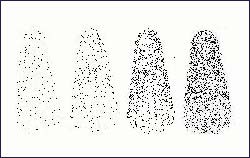This topic covers issues related to energy generation, conversion, transportation and consumption and how the industry is addressing the challenge of energy efficiency in general.
innovations-report provides in-depth and informative reports and articles on subjects ranging from wind energy, fuel cell technology, solar energy, geothermal energy, petroleum, gas, nuclear engineering, alternative energy and energy efficiency to fusion, hydrogen and superconductor technologies.

In the future, your cell phone calls and television pictures could become a lot clearer thanks to tiny antennas thousands of times smaller than the width of a human hair. At least that’s the speculation of a University of Southern California researcher who has been investigating nanotube transistors.
The USC scientist, Bart Kosko, Ph.D., a professor in the school’s Electrical Engineering Department, led a study that has demonstrated for the first time that minuscule antennas, in t

Dutch research has demonstrated that there are no technical barriers to wind energy generating a significant part of the electricity supply. With the appropriate technical measures, possible problems in the electricity grid can be taken care of properly.
Researcher Han Slootweg developed simulation models, which demonstrate how wind energy affects the behaviour of electricity grids in concrete situations. These simulation models can also be used to establish the precise nature and size of a

Wind power is the most rapidly growing form of energy in the world today. European wind power accounts for the greatest share, with Denmark, Germany, and Spain as leading countries. In Denmark, for example, wind power provides roughly 12 percent of production of electricity. In Sweden, too, wind power has increased, although to a more limited extent. Between 1996 and 2003 the number of plants doubled from 300 to 631, while annual production trebled from 0.15 to about 0.5 TWh. However, wind accounts f

As notebook computers become thinner and lighter, the ever-present bulky power adapters used for line current approach the weight of the laptops, but smaller and lighter adapters may be on the way, thanks to piezoelectric technology, according to a Penn State electrical engineer.
“Electromagnetic transformers are shrinking slightly, but there are theoretical limitations in reducing the general size,” says Dr. Kenji Uchino, professor of electrical engineering. “A piezoelectric motor and tran

USC nanotube device uses ’Stochastic Resonance’ to enhance subthreshold signals
Paradoxical as it seems, a team of University of Southern California researchers has built a signal detector that only works when noise is added.
The device uses a novel kind of transistor made from carbon nanotubes. The principal investigator, Professor Bart Kosko of the USC department of electrical engineering, claims that the series of experiments reported in the December issue of the American

Department of Energy-funded researchers have decoded and analyzed the genome of a bacterium with the potential to bioremediate radioactive metals and generate electricity. In an article published in the December 12th issue of Science, researchers at The Institute for Genomic Research (TIGR) and the University of Massachusetts, Amherst, report that Geobacter sulfurreducens possesses extraordinary capabilities to transport electrons and “reduce” metal ions as part of its energy-generating metabolism.